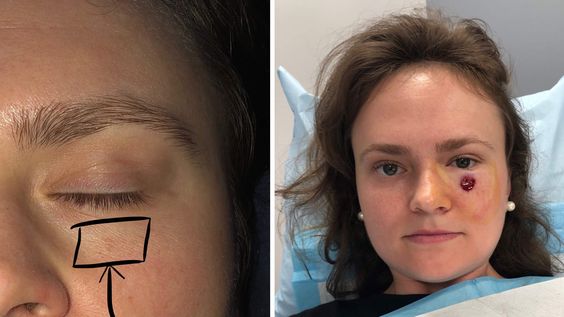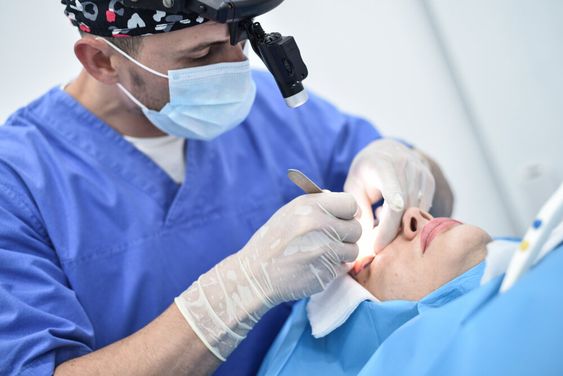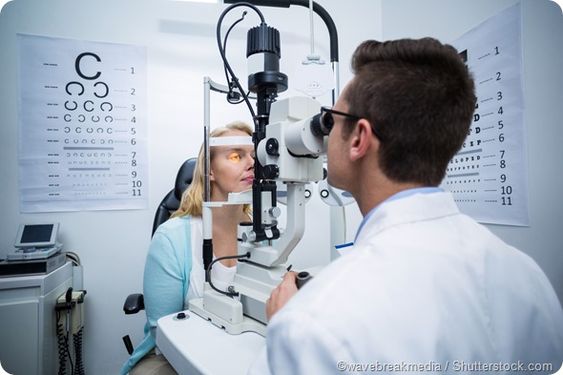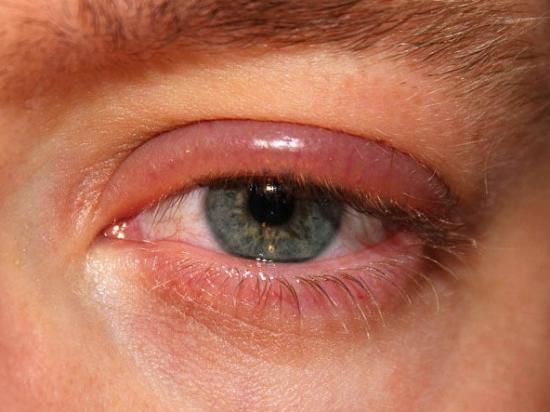andraursuta.com – There are two types of eyelid skin cancer: squamous cell carcinoma and basal cell carcinoma. Basal cell carcinoma is less common but biologically more aggressive and may occur on areas of the face and eyelids that have been exposed to sunlight for a long time. Surgery is the most common treatment for squamous cell cancer of the eyelid. This type of skin cancer is most often treated by surgical excision, but it can spread to lymph nodes or spread through the body through direct extension.
Basal cell carcinoma is usually slow growing and locally enlarged

Treatment for eyelid skin cancer depends on the stage and type of cancer. Basal cell carcinomas usually grow slowly and enlarge locally. Melanomas, squamous cell, and melanoma can spread through the bloodstream. Therefore, aggressive treatment is required. The sooner your eyelid cancer is detected, the lower your risk of recurrence. Once diagnosed, it is important to undergo follow-up exams to monitor for any new growths.
Early detection and treatment for eyelid skin cancer is the best way to reduce its risk. It’s important to monitor the appearance of lesions around your eyes. These lesions are scaly, tend to crack or bleed, and may eventually lead to eyelid skin cancer. It’s important to consult with a specialist right away if you notice any new lesions or abnormalities. A diagnosis of eyelid skin tumors can be difficult if it’s not diagnosed in its early stages.
Surgical excision is the most common method of removal for eyelid skin cancer

Treatment for eyelid skin cancer depends on the stage of the disease. Surgical excision is the most common method of removal for eyelid skin cancer. However, patients may also undergo other treatments, such as radiation. For example, the removal of the affected eyelid skin cancer can reduce the risk of recurrence. Further, it may be necessary for reconstructive surgeries to restore the appearance of the eyelids. If a patient suffers from a recurrent cancer, surgery is recommended.
Most cases of eyelid skin cancer are harmless. Most patients are able to monitor their own eyelid lesions and contact their doctor if they become painful. If the lesions do not respond to topical treatments, they may require surgical excision. Surgical treatment for eyelid skin cancer will vary by type and severity of the disease. In some cases, a biopsy will be necessary to confirm the diagnosis. If eyelid skin cancer has spread to the eyelid, it can result in permanent vision loss.
Cancer is curable if caught early

There are several types of eyelid skin cancer, including basal cell carcinoma. Generally, the most common is basal cell carcinoma. While it does not cause any pain, it can destroy the eyelashes and irritate the eye. In addition, it may spread into the eye socket and tear drain. If untreated, it is potentially fatal. If caught early, the cancer may be curable. If not, the tumor will need to be removed and followed up by your doctor for a few years to prevent it from coming back.
The symptoms of eyelid skin cancer vary according to the type of cancer. The most common type of eyelid skin cancer is basal cell carcinoma, which accounts for 90 percent of all cases. The less common type, squamous cell carcinoma, grows very slowly and can damage the eyelashes. In some cases, it can invade the eye socket. In this case, surgery is not always possible. If the disease is detected early, it will be more likely to spread and recur.
Lesions that appear on the eyelids are an early symptom of skin cancer of the eyelids

When eyelid skin cancer is detected, it is important to seek immediate treatment. Symptoms may include lesions that appear on the eyelid. Non-cancerous lesions, while they are not painful, can be an early sign of eyelid cancer. If untreated, the lesions can spread into the sinuses and orbit. They can reach the eye and even reach the brain, leading to death. The best treatment for skin cancer is unique to the patient and will depend on the condition.
A diagnosis of eyelid skin cancer requires a thorough examination of the eyelid. The lesion itself can be easily diagnosed by a doctor. It is also important to have the lesion checked by a medical professional to make sure it is not something more serious. In the case of eyelid skin cancer, it is vital to get a thorough evaluation of the area to detect the symptoms early. If the condition is present, treatment can include surgical excision, reconstruction, and radiation.
